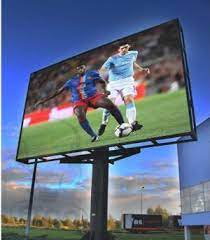LEDs are used more and more widely. From small stores to large squares, LED screens can be seen. So how much do you know about LED screens? Let’s learn about them below from our Mustang LED article.
Point spacing calculation method
The center distance between each pixel and each adjacent pixel; each pixel can be one LED light [such as PH10 (1R)], two LED lights [such as PH16 (2R)], three LED lamps [such as PH16 (2R1G1B)], the point spacing of P16 is: 16MM; the point spacing of P20 is: 20MM; the point spacing of P12 is: 12MM.
Screen length and width calculation
Length and height calculation method: point spacing × number of points = length/height
For example: PH16 length=16 points×1.6㎝=25.6㎝ height=8 points×1.6㎝=12.8㎝
PH10 length=32 points×1.0㎝=32㎝ height=16 points×1.0㎝=16㎝
Calculation of the number of screen modules
Calculation method for the number of modules used on the screen: total area ÷ module length ÷ module height = number of modules used
For example: the number of modules used for 10 square meters of PH16 outdoor monochrome LED display is equal to the:
10 square meters÷0.256 meters÷0.128 meters=305.17678≈305 pieces
A more accurate calculation method: number of modules used in length × number of modules used in height = total number of modules used
For example: the number of modules used for a PH16 monochrome LED display screen that is 5 meters long and 2 meters high:
Number of long-use modules = 5 meters ÷ 0.256 meters = 19.53125 ≈ 20 pieces
Number of highly used modules = 2 meters ÷ 0.128 meters = 15.625 ≈ 16 modules
Total number of modules used = 20 × 16 = 320
Calculation method of visible distance of LED display screen
The distance between RGB color mixing and mixing of three colors into a single color: LED SMD Screen full-color screen viewing distance = pixel spacing (mm) × 500/1000.
The minimum viewing distance can display a smooth image: LED display viewing distance = pixel spacing (mm) × 1000/1000.
The most suitable viewing distance is the distance at which the viewer can see a highly clear picture: the optimal viewing distance of the LED display = pixel spacing (mm) × 3000/1000.
The farthest viewing distance: The farthest viewing distance of LED display = screen height (meters) × 30 (times).
LED display scanning method calculation method
Scanning method: In a certain display area, the ratio of the number of lines lit at the same time to the number of lines in the entire area. Indoor single and double colors are generally scanned at 1/16, indoor full color is generally scanned at 1/8, outdoor single and double colors are generally scanned at 1/4, and outdoor full color is generally static scan. Currently, there are two driving methods for LED display screens on the market;
First static scanning and second dynamic scanning. First scanning is divided into static real pixels and static virtual. Second scanning is also divided into dynamic real pixels and dynamic virtual.
The driving devices generally use domestic HC595 and Taiwan MBI5026. , Japan’s Toshiba TB62726, generally has 1/2 scan, 1/4 scan, 1/8 scan, 1/16 scan.
If driven by MBI5026, the module uses a total of 16*8* (2+1+1) = 512. MBI5026 is a 16-bit chip, 512/ 16=32.
It will be static virtual if chips are used 32 MBI5026
If 16 MBI5026 chips are used, it will dynamic ½ scan virtual
It will dynamic ¼ scan virtual if 16 MBI5026 chips are used
If a series of the boards connected by two red lights:
It is a static real pixel if 24 MBI5026 chips using
Using 12 MBI5026 chips, it is a dynamic ½ scan of real pixels
Using 6 MBI5026 chips, it is a dynamic ¼ scan of real pixels
On the LED unit board, the scanning modes are 1/16, 1/8, 1/4, 1/2, and static.




